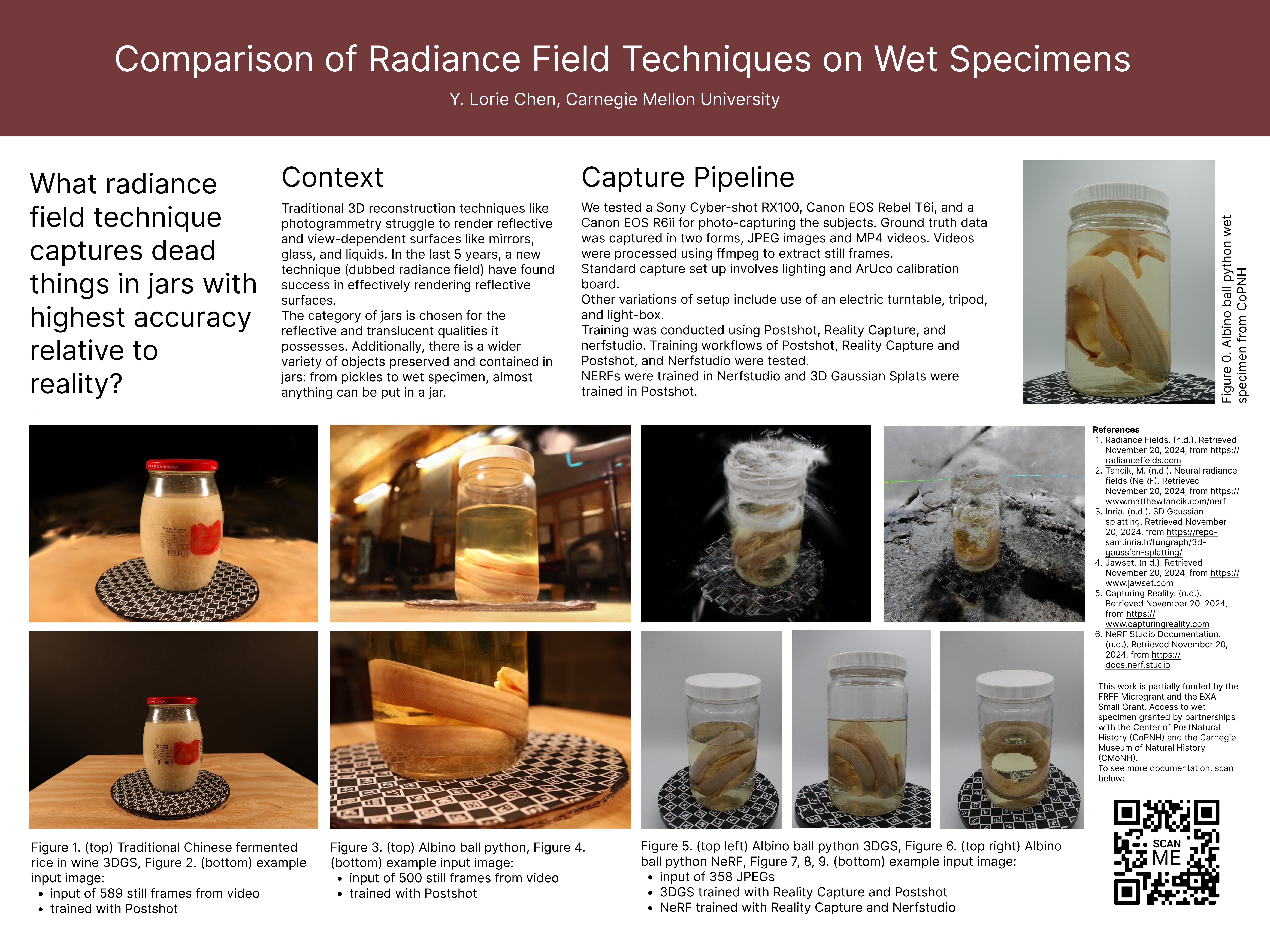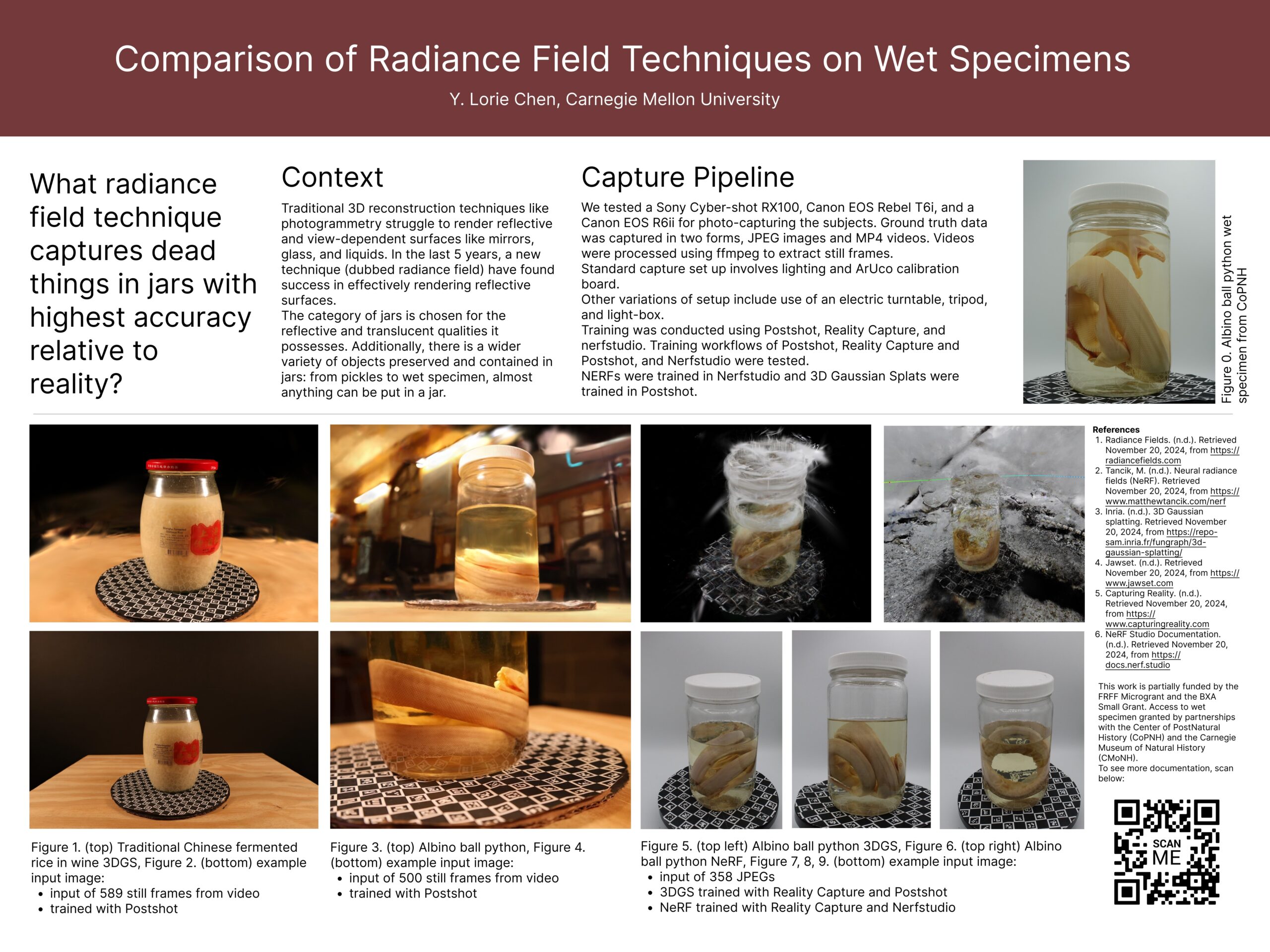Dead Things in Jars (2025 Maddy Varner Award Winner)
Lorie Chen (2024)
A work in progress by Lorie Chen towards a workflow for capturing wet specimens of dead things (from animals to plants).
Traditional 3D reconstruction methods, like photogrammetry, often struggle to render reflective and translucent surfaces such as glass, water, and liquids. These limitations are particularly evident in objects like jars, which uniquely combine reflective and translucent qualities while containing diverse contents, from pickles to wet specimens. Photogrammetry’s reliance on point clouds with polygon and texture meshes falls short in capturing these materials, leaving reflective and view-dependent surfaces poorly represented.
Advancements like radiance fields and 3D Gaussian Splatting have revolutionized this space. Radiance fields, such as Neural Radiance Fields (NeRFs), use neural networks to generate realistic 3D representations of objects by synthesizing views from any arbitrary angle. NeRFs model view-dependent lighting effects, enabling them to capture intricate details like reflections that shift with the viewing angle. Their approach involves querying 5D coordinates—spatial location and viewing direction—to compute volume density and radiance, allowing for photorealistic novel views of complex scenes through differentiable volume rendering. Complementing NeRFs, 3D Gaussian Splatting uses gaussian “blobs” in a point cloud, enabling smooth transitions and accurate depictions of challenging materials. Together, these innovations provide an unprecedented ability to create detailed 3D models of objects like jars, faithfully capturing their reflective, translucent, and complex properties.
This work has been funded in part by FRFF Microgrant #2025-047 and the BXA Small Grant. Read more about her work here.
Access to wet specimen was granted by partnerships with the Center of PostNatural History (CoPNH) and the Carnegie Museum of Natural History (CMoNH).
Many thanks to the following people who have helped and given advice to me on how to go about this project:
Direction and planning: Golan Levin (CMU), Nica Ross (CMU), Rich Pell (CMU), Mariana Marques (CMoNH)
Execution and technical: Leo Lin (CMU)
Additional thanks to those who’ve taken the time to talk to me about Gaussian Splats and helped me troubleshoot the ideation process including and not limiting to: Oscar Dadfar (CMU), Jose Gomes (CMU)
Special thanks to Elliot at Polycam for giving me access to work with Polycam!

